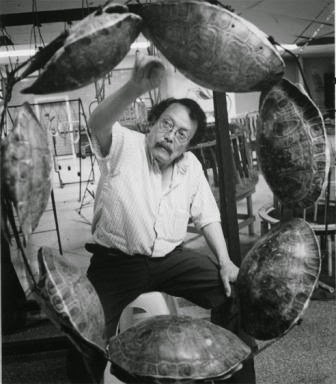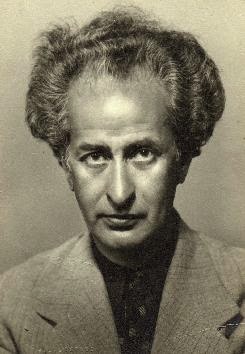Julian Carrillo Bibliography
Julian Carrillo, a Mexican composer, violinist, and conductor was born on January 28, 1875 in Ahualulco, San Luis Potosi. Carillo created music during a period that was named the Independence period with regards to music in Mexico. It was named this period because Mexico had gained Independence from Spain and had rebelled against the ecclesiastical influence that was forced upon them. From a young age, Carrillo was surrounded by music. He sang in the children’s choir of Ahualulco’s church. Around ten years old, Carrillo became more involved with music outside of the choir, and began to study with the conductor of the choir, Flavio F Carlos. Independence brought music from Europe to Mexico. France and Italy dominated with their influence. Carrillo played in Carlos’ orchestra as percussionist and violinist in a time where traditional Mexican music were arranged for piano. This was only the beginning of Carrillo’s success in music.
Like many other famous composers from Mexico, Carrillo attended National Conservatory of Music in Mexico City in order to continue to pursue his music career. Quickly, he became very passionate and immersed in the mathematical side of music. He was very curious about the fundamental intervals in music. He experimented with his violin in order to alter the pitch of each string of his violin. In 1895, Carrillo discovered the sixteenths of a tone by dividing the fourth string of his violin between G and A into sixteen parts (last.fm). Regularly a scale is made with half-tones of twelve pitches; and Carrillo created a musical scale with sixteenths of each tone; having 96 different pitches (last.fm). This discovery created a radical change within the musical system; and earned Carrillo a scholarship to study at Leipzig Royal Conservatory (Wikipedia).
While in Europe, he was able to improve his skills as a violinist, and devote more to his creation of tonal diversity within classical forms. He later returned to Mexico where he received more awards for his accomplishments. For example, he was a delegate to the musical congress of Rome and London; and he was nominated at the National Conservatory of Music which then allowed him to “amend the curriculum, putting more emphasis on rigorous musical technical preparation as well as literature and Spanish language” (Wikipedia). He was gaining excessive publicity for his conducting and composing. In the early 1900’s, he organized and conducted the Beethoven string quartet and Beethoven Symphony orchestra; and published Discursos sobre la musica, Platicas musicales (Wikipedia). Carrillo was becoming one of the most important figures in music society.
During the early 1900s, Victoriano Huerta, president of Mexico, was overthrown; forcing Carrillo to flee to the United States. While in the United States, he conducted and organized the American Symphony Orchestra (Wikipedia). The American Symphony Orchestra had their first performance in New York where a Journalist was pleased with Carrllio’s work. The journalist deemed Carrillo “the herald of musical Monroe Doctorine” (Wikipedia). This is when Carrillo began to write the “Thirteen Sound Theory.”
In 1920, the ‘Thirteen Sound theory” revolution was an attempt to incorporate musical microintervals into the musical system (last.fm). For example, “the number 13 is not a proposal to use a scale made with thirteen sounds, but symbolizing a break within the traditional twelve-pitch chromatic scale” (last.fm). Julian reformed theories of music and physics of music. He invented a musical notation that was based on numbers. The microtonal sound of the “Thirteen Sounds theory” inspired other contemporary artists like Czech Alois haba and Ivan Wishnegradsky to compose in quarter of tones. Carrillo also created instruments that could produce the microinterval sound. Although not always accepted, many artists started to join the “Thirteen Sound” revolution and compose and perform pieces that followed the microinterval sound. Do to his success in the innovated microinterval sound, Carrillo created a symphony called the Thirteenth Sound Symphony Orchestra; and published a book called La revolucion musical del Sonido 13;” which discussed the history and background of his revolution (Wikipedia).
In 1924, Carillo retired from public performances and the several other obligations he had in order to dedicate his time to showing and teaching his new theory. He composed three operas: Matilda, Ossian y Zulith; six symphonies and various other ways to demonstrate his Sonido 13. Before passing on September 9th, 1965 Carrillo’s work popularized, and he performed several concerts across the country spreading the revolution of the “Thirteen Sound.”
References
1. http://en.m.wikipedia.org/wiki/Juli%C3%A1n_Carrillo
2. http://www.last.fm/music/Juli%C3%A1n+Carrillo
3. http://www.infobigrafias.com
 Manuel Jose de Quiros is an 18th century Guatemalan composer, teacher and collector who was appointed maestro de capilla of Guatemala City Cathedral in March of 1738, where he served until his death. His extant compositions are Spanish villancicos which exhibit his interest in local color and ethnic texts. A few of his compositions are in Latin, an example being Parce mihi Domine. The majority of his works are arranged for two-seven voices and all have instrumental accompan
Manuel Jose de Quiros is an 18th century Guatemalan composer, teacher and collector who was appointed maestro de capilla of Guatemala City Cathedral in March of 1738, where he served until his death. His extant compositions are Spanish villancicos which exhibit his interest in local color and ethnic texts. A few of his compositions are in Latin, an example being Parce mihi Domine. The majority of his works are arranged for two-seven voices and all have instrumental accompan





















